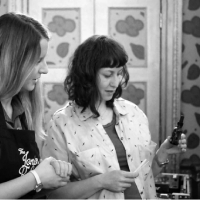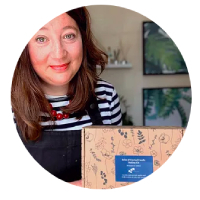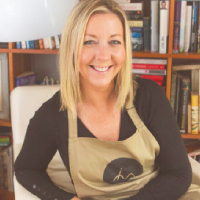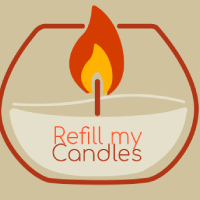How to make candles at home according to women who have made a business out of selling them
From wax to wick, create a signature glow by pouring your own ambient candles with our expert-approved guide
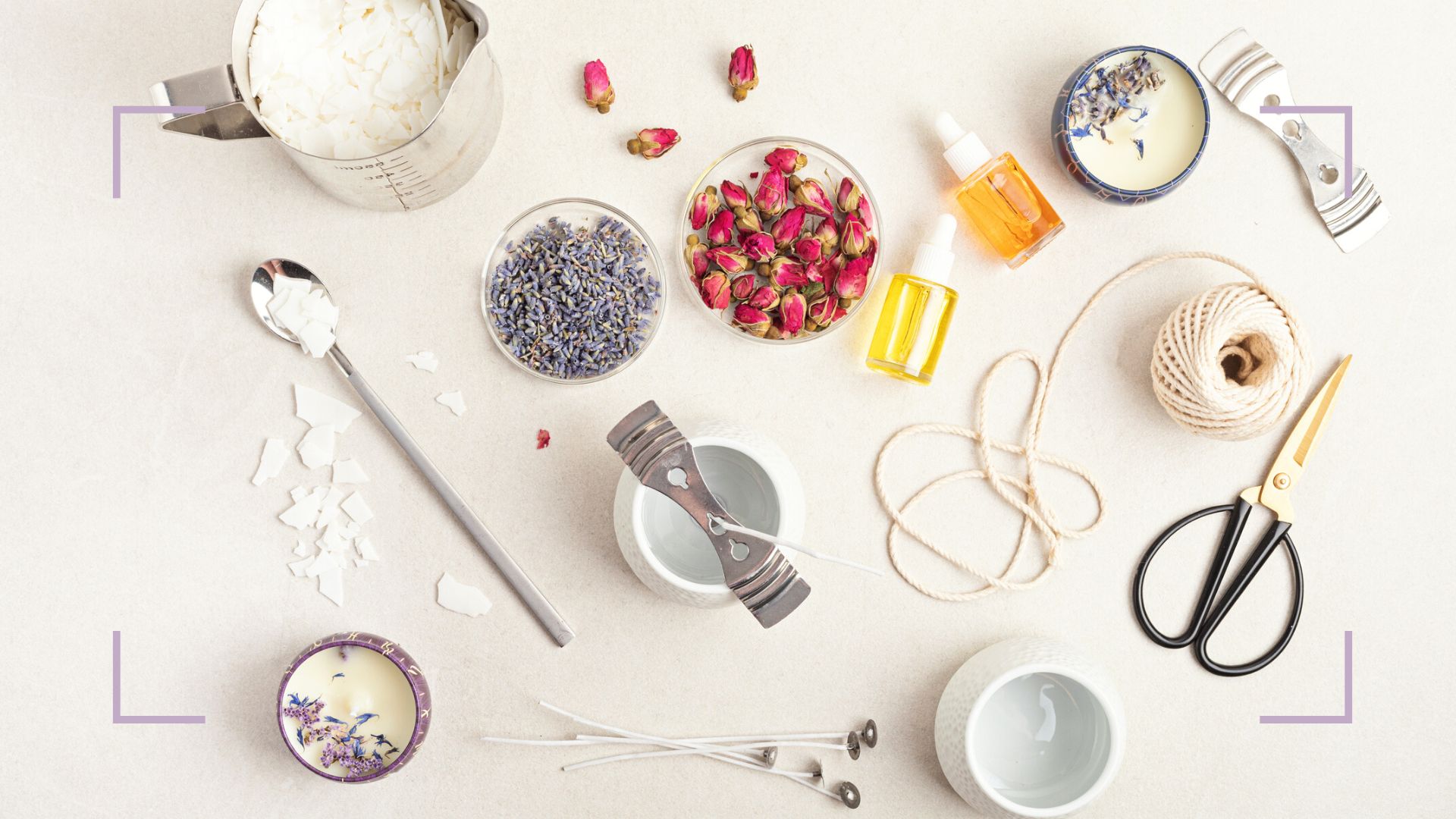

Anna Paul
Learning how to make candles at home can not only be an affordable way to create a relaxing ambience in your home, but it can also be a lucrative business venture. This DIY craft is relatively easy and inexpensive once you have the right utensils - and some good advice. We spoke to six women who have turned candle-making into a business about how to get candle crafting right at home.
Candle making is an ancient art form and, pre-19th century and the light bulb, was as common a daily chore as hanging out the washing. Nowadays, it's more a labour of love than a necessity, with candle crafting a popular hobby for women worldwide. "Candle making is a mindful activity - it is so relaxing and meditative," chief candle maker Becky Avery, who set up Hazel & Blue candles 10 years ago, told w&h. "And the best thing is that the finished product provides hours more of relaxation."
Candles can really transform a room, whether you're a fan of luxurious Diptyque candles, the best Jo Malone candles, or prefer all-natural aromatherapy candles. But there's something extra special about making your own, getting creative with scents and personalized oil blends. Plus, they make thoughtful gifts and can even earn you some extra income as a new business venture or side project. But what's the best way to hand-craft candles and what special considerations need to be taken into account? We asked the experts to divulge their candle-making secrets. And if you're in need of some inspiration before you learn how to make candles at home, take a look at our guide on the best scented candles on the market.
The materials you need to make your own candles at home
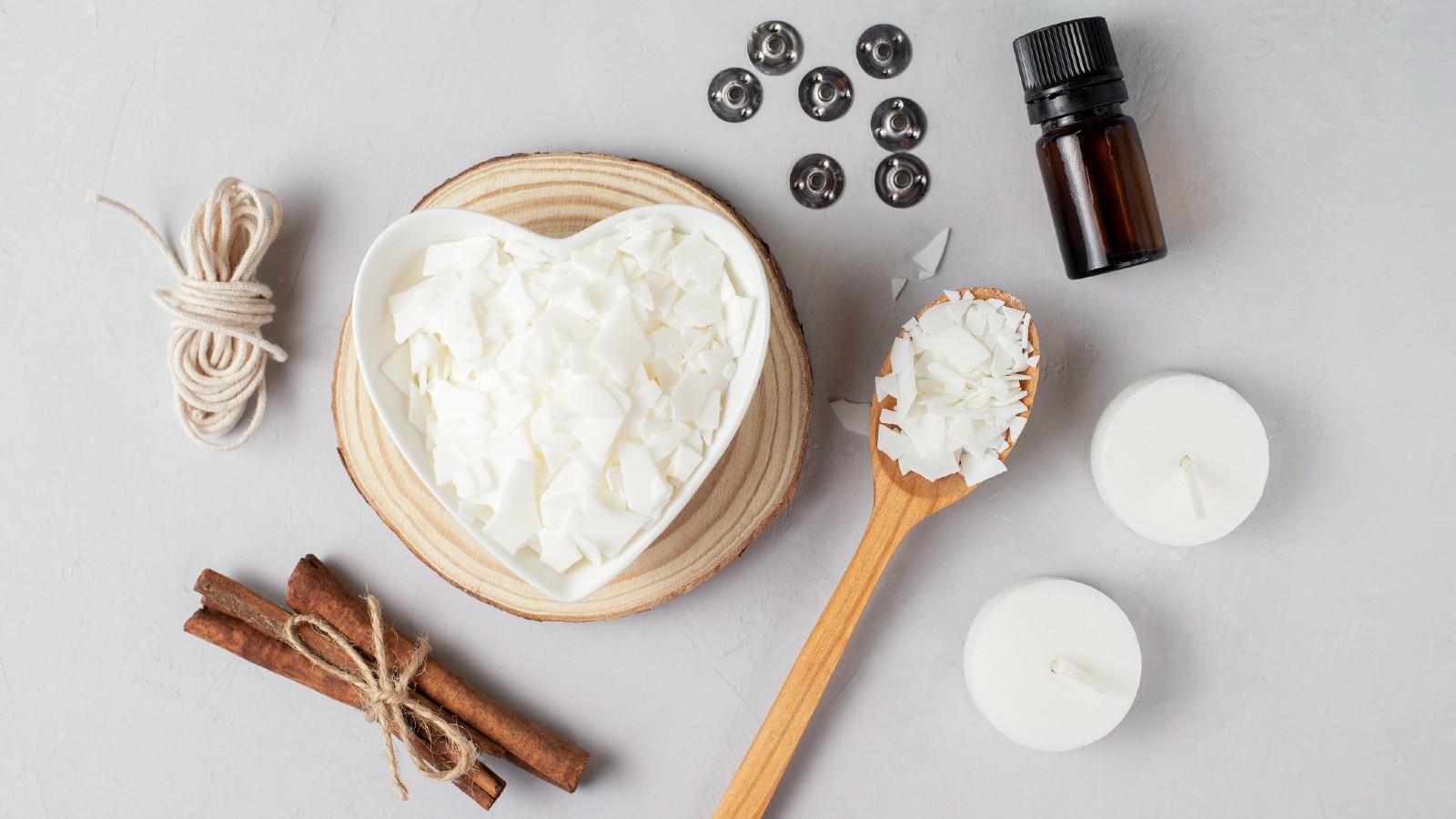
Before we get to the nine steps for making candles, there are a few equipment and technique choices to be made to ensure your homemade candle is as high-quality and safe as shop-bought versions.
"Creating a candle is all about the materials and the physics of how they react together," Helen McCue the founder of Moments Candles told us. "It's about the jar, about the percentage of oil that you use, the type of wick that you use. These choices will really affect the finished product."
This guide focuses on how to make container candles, which use a vessel such as an old skincare pot, dish, or jam jar, rather than mold candles. For container candles, you'll need to think about four factors before you begin - the wax, the container, the wick, and what fragrance oils you will use.
1. Select your wax
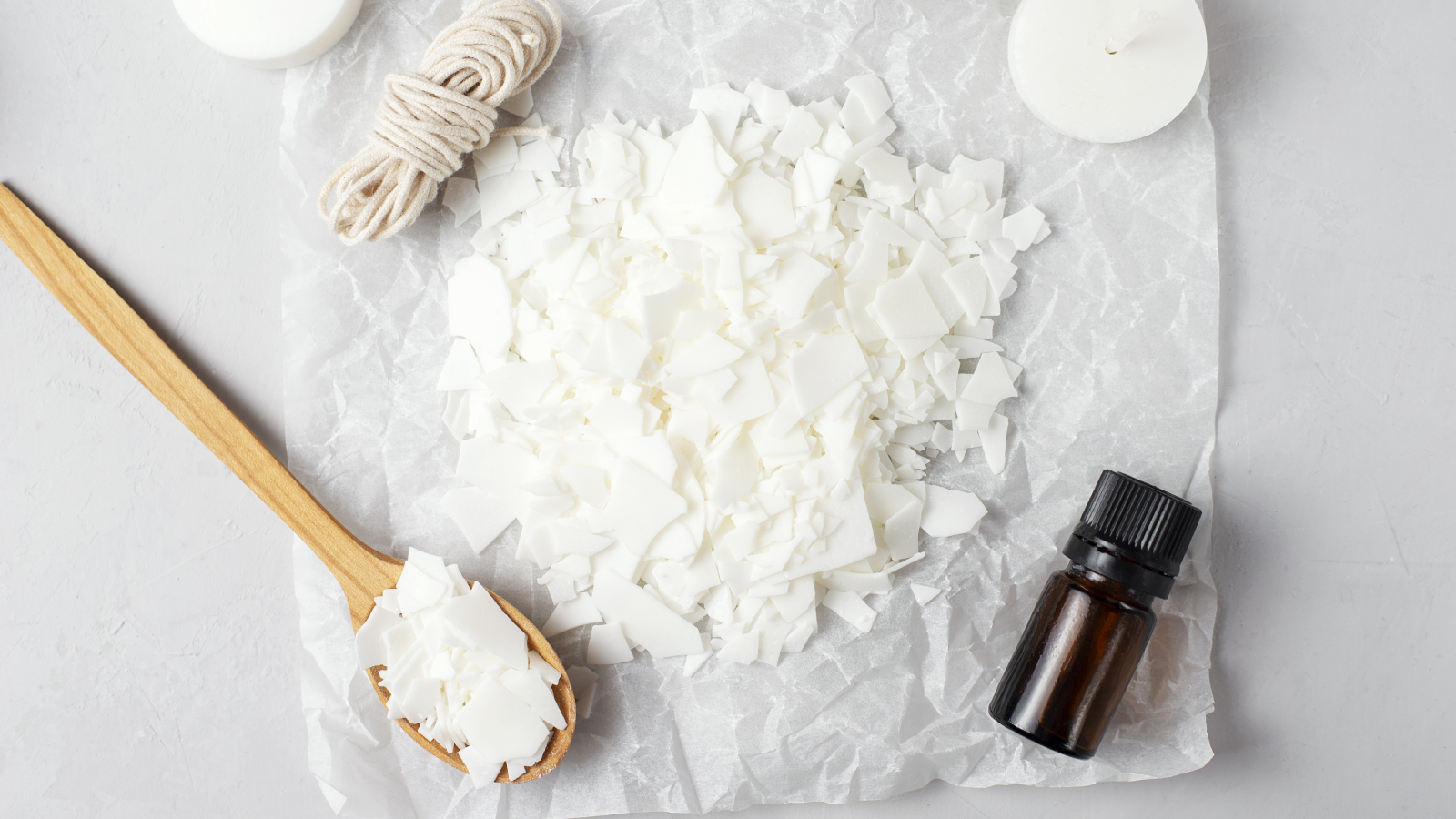
There are three main types of wax to choose from for candle making and this usually depends on the type of candle you are going to make and whether you want your wax to be natural.
Sign up for the woman&home newsletter
Sign up to our free daily email for the latest royal and entertainment news, interesting opinion, expert advice on styling and beauty trends, and no-nonsense guides to the health and wellness questions you want answered.
- Paraffin wax—petroleum-based paraffin wax is also known as straight wax. It's the most commonly used and least expensive, but if you favour natural products it's a no-go. Paraffin wax is the most suitable for pillar candles as it will set quickly and more easily, but it's not as sustainable as natural products.
- Soy wax—soy wax is 100% natural and made from soybeans. It's ideal for container candles, but this wax isn't as suitable for pillar candles. Soy candles will give less of a scent throw (the amount of the candle fragrance will fill the room), so you may need to add more essential or fragrance oil.
- Beeswax—beeswax is 100% natural and also available in sheets. This wax is slightly golden in colour and has a faint honey scent. Like soy wax, beeswax also often has a less powerful scent throw than paraffin, but many candle makers opt for a more delicate fragrance to complement beeswax's natural honey aroma.
The type of wax you use will also determine how long your candle needs to cure. Curing is the chemical process that takes place as the wax and fragrance oil bind and bond into one another, and the exact amount of time it takes will depend on the type of wax, as well as the fragrance oil used. As a rough guide:
- Paraffin wax—allow curing for at least 24 hours
- Soy wax and beeswax—allow curing for at least 1-2 weeks
If you want to get more clued up on which wax to opt for, Candle Science has an expansive, in-depth guide. Most wax manufacturers will also provide specific information
2. Decide on a container
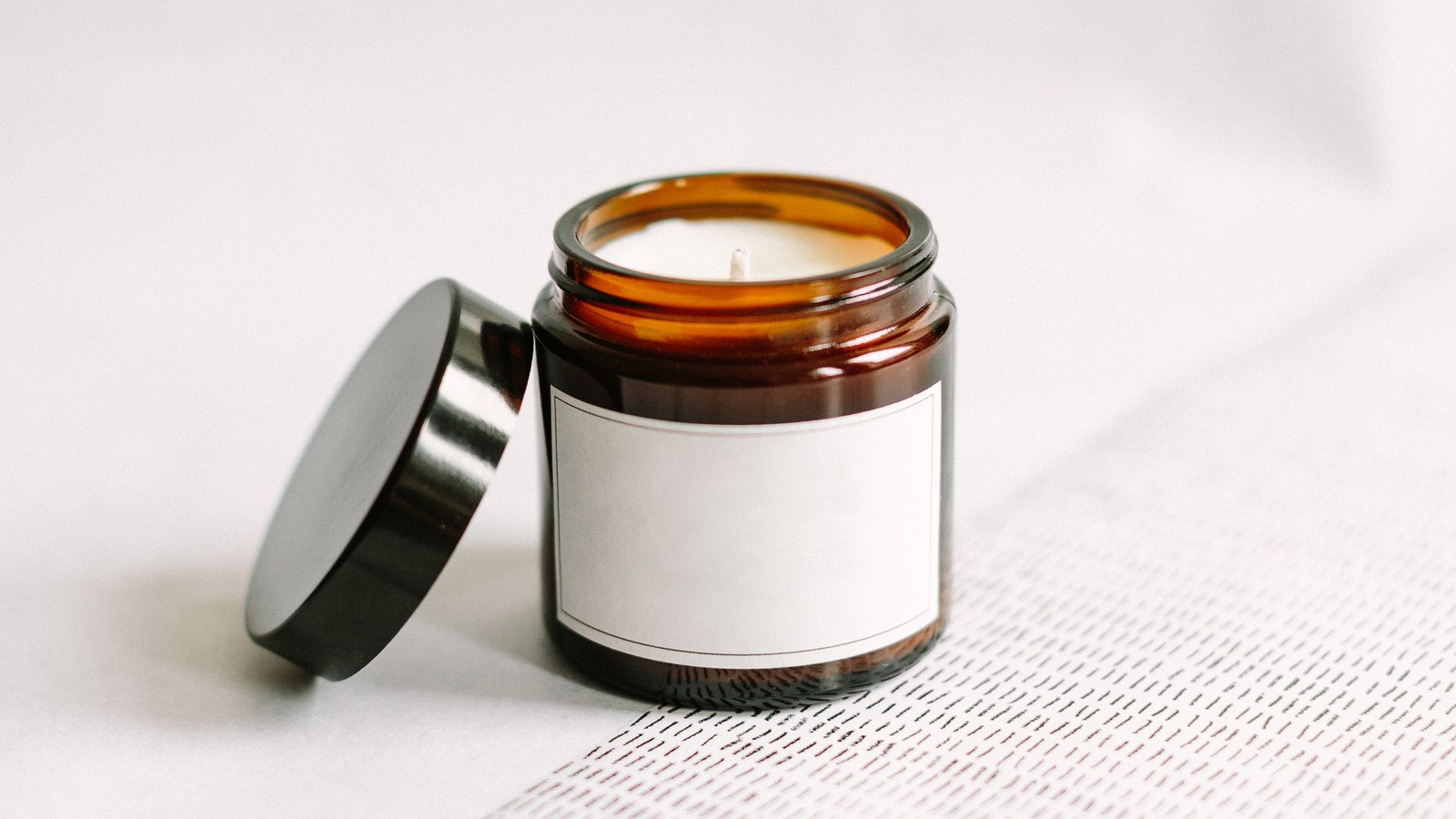
Choose a container made from a material that will withstand high heat and won't leak or crack. Upcycled jam jars work well and make for unique candles that will look at home in a rustic bathroom or cosy living space. You can also customize these with your own decorations or labels once the candles have been set, making them a perfect housewarming gift idea.
If you're opting for a free-standing candle, you'll need to use a mold instead.
London Kreautler, the owner of Particle Goods Candles, advises using glass, metal, or ceramic for candle containers. Plastic is not suitable for candle making, explains Kreautler. "It's prone to melting, it could catch on fire and at the very least it could emit some yucky chemicals into the air.
"I also wouldn't recommend materials that are porous such as wood or terracotta. Those are not going to work very well for your container candles either, as they're likely to easily crack or become damaged during the process."
3. Pick your wick
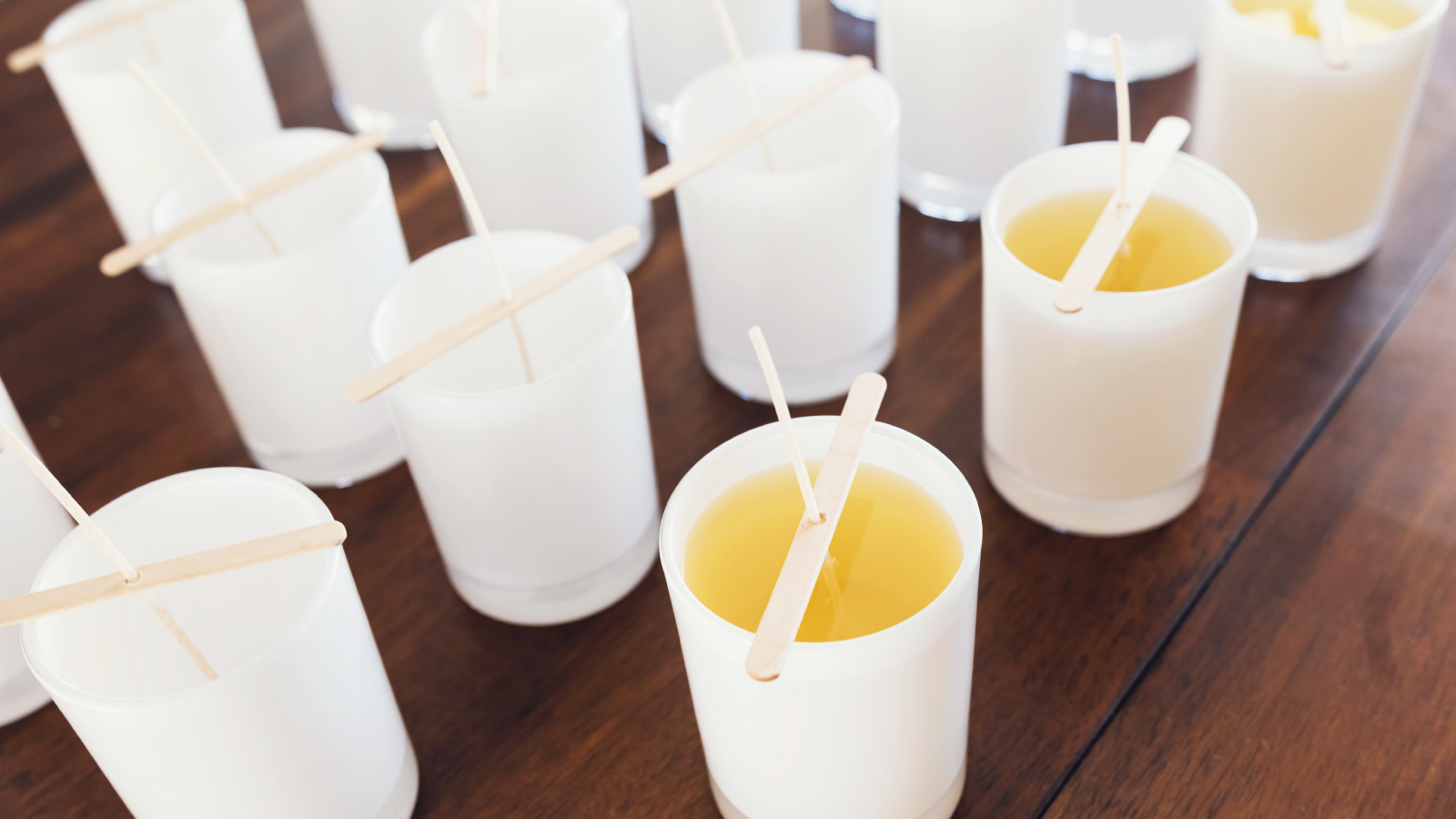
The candle wick is the fabric that holds the flame in the center of the vessel and is a vital cog in the candle's performance. It's made from braided fibers of various materials, which are usually:
- Wood
- Cotton
- Paper
- Hemp
- Zinc core
We'd advise investing in pre-made wicks online from stores such as Amazon or American Crafts. The length of the wick you need is dependent on the height of your chosen container (opt for two inches longer than the container with the view to cutting down the wick), but when it comes to the thickness of your wick, it's all about trial and error, so it would be wise to initially opt for a few different thickness options.
Head Experimenter, Lucy Heale, at the London Refinery, explains "The wick can be considered as the engine of your candle and the type and size of wick required will depend on the wax, oils, and (sometimes) dye used.
"The aim is to get a melt pool the whole width of the candle jar after an hour of burning. Keep testing your candles with different wicks and fragrances in your containers until a suitable wick is selected, which burns effectively and safely—candle-making kits should already have the right size wick for the supplied container after plenty of studio testing."
4. Select fragrance oils
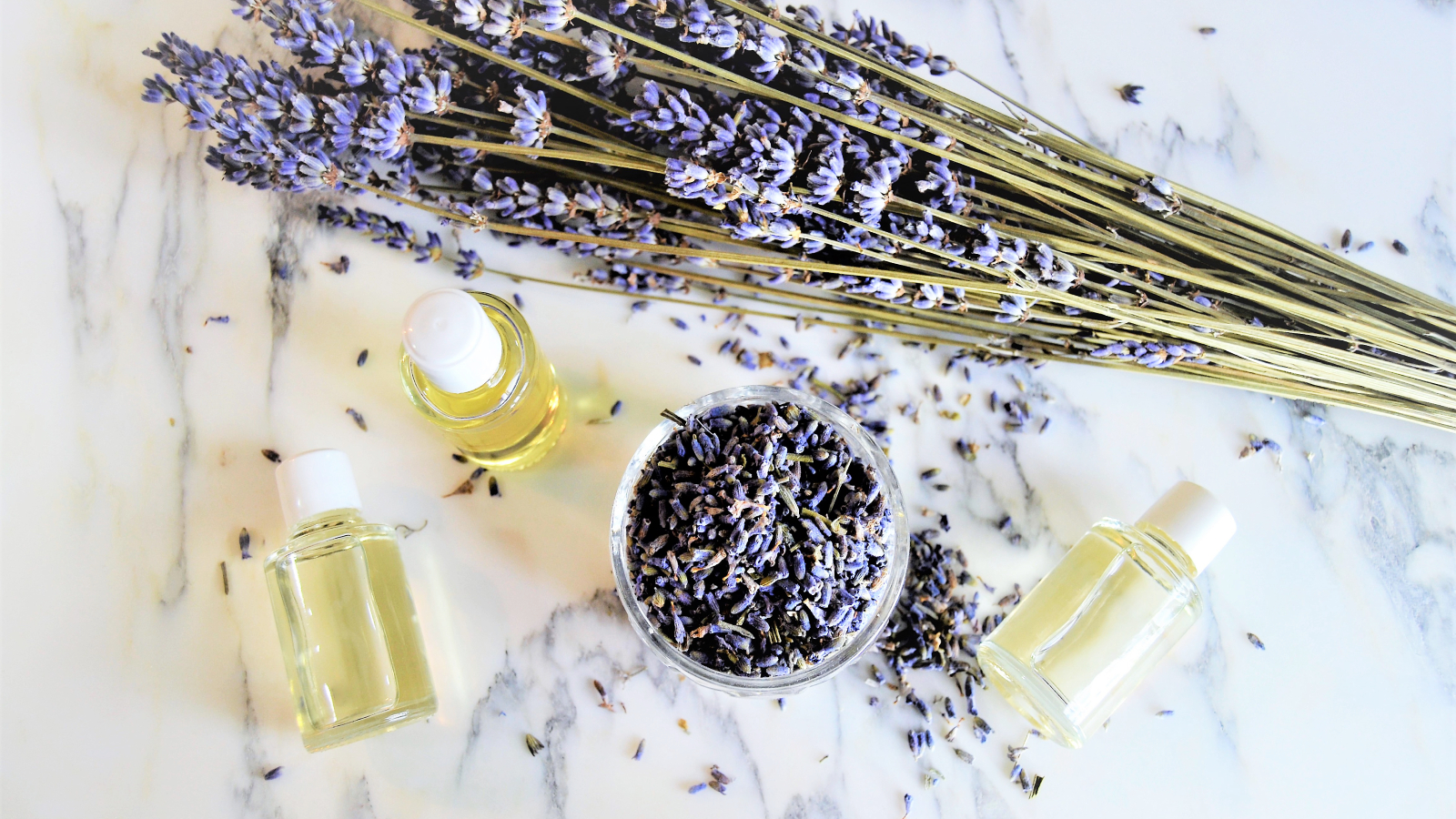
There are two types of fragrances you can successfully add to container candles—essential oils and synthetic fragrance oils.
- Essential oils—are distilled and extracted from scents in nature such as flowers, leaves, herbs and fruit.
- Fragrance oils—are made synthetically and are cheaper. These are often pre-blended by experts in fragrance industries.
Which fragrance you decide to scent the candles with comes down to your personal preference, but bear in mind that different essential oils can evoke different emotions. Take a look at our guide to the best essential oils if you want to find out more about how to select the right scent for you. Whatever one you opt for, it's important to use the right oil/wax ratio.
How to work out the oil-to-wax ratio
Jo Macfarlane is an award-winning Scottish hand-poured luxury scented candle maker, and she advises working on a ratio of 8 parts of fragrance to 92 parts wax, which translates to approximately 1oz fragrance oil per pound of wax.
"Work out 8% of the candle as a measure for your fragrance (as this is industry standard) but bear in mind this can vary according to personal taste," Macfarlane advises. "I personally use 6% in my own candles, but it all comes back to testing and testing again."
What do you need to make homemade candles?
Now that you've picked your ingredients, it's time to get together your equipment. Here is everything you need to get started.
- Old newspaper or a protective sheet
- Heat supply
- Water
- Double boiler or pan and pitcher
- Kitchen scales
- Candle containers (glass or metal jars or tubs work well)
- Wax flakes, beads, or segments of choice
- Wicks
- Spatula
- Thermometer
- Bow-tie wick clips, chopsticks, lolly sticks, or pencils
- Scissors
How to make candles at home in 9 simple steps
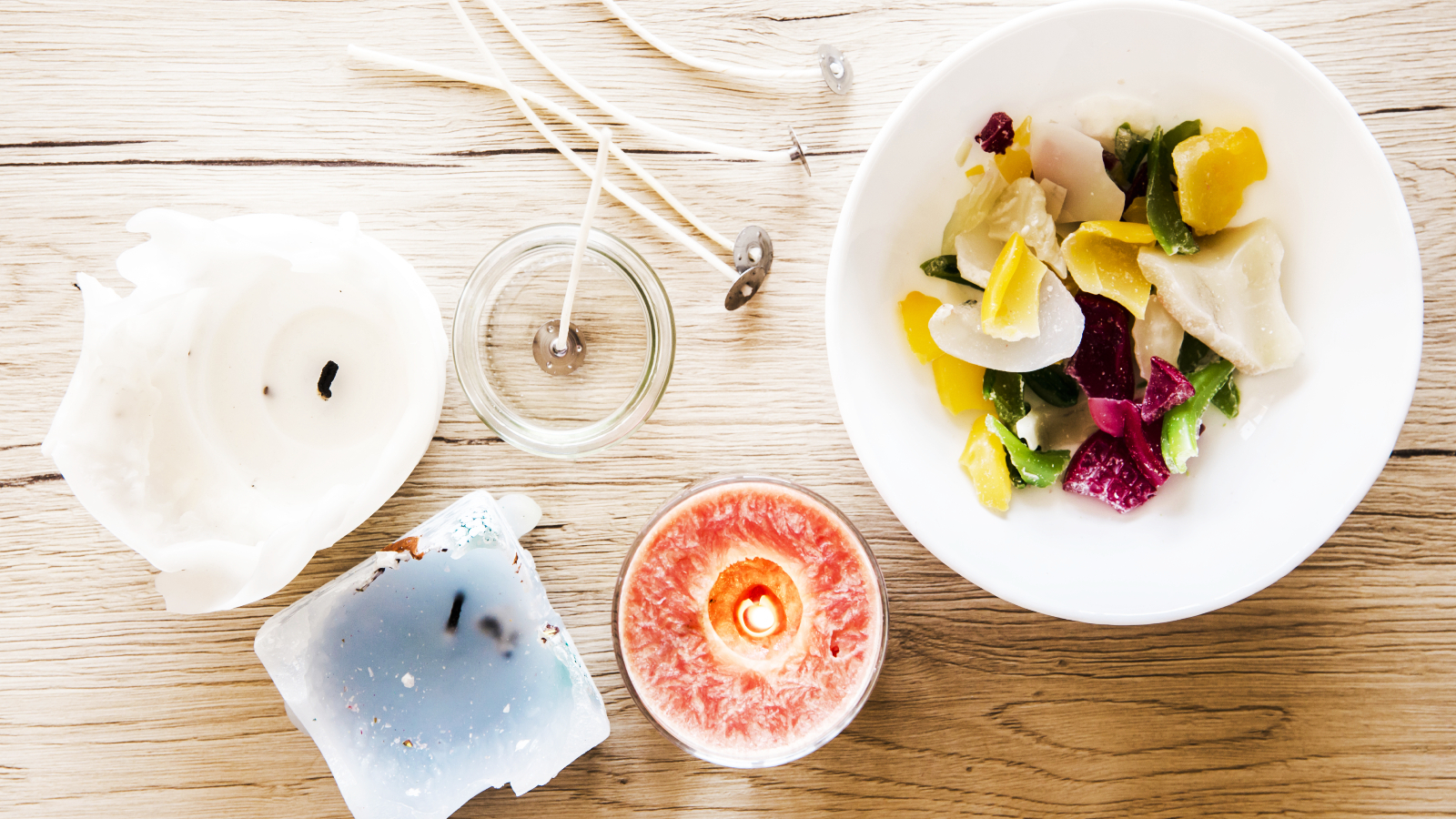
1. Cover your surfaces
Before you open the wax, you'll need to protect any nearby surfaces from splatters and spillages, so clean your kitchen surfaces and line them with an old newspaper.
2. Prepare your candle container
Make sure your chosen container is clean and dry. Place the wick in the center of the jar and stick it down firmly with a wick sticker (a double-sided glue-like disc that can be placed on the end of a wick and should come with your wick) at the bottom. Make sure your wick is sitting centrally and straight-up by clipping on a bow tie wick clip or sandwich the wick between two balanced objects such as lolly sticks.
3. Measure your wax
This part can get a little complicated especially if you're upcycling old containers with irregular sizes because, by volume, wax is less dense than water. Therefore, the amount of wax you need won't be the same as the volume of the vessel. This measurement will also vary depending on your wax and fragrance ratio. Normally, most wax averages to around 86% of the density of water.
For ease, we recommend using an online calculator, such as the one from Candle Shack where you can add in your vessel size, number and the proportions you are working with. Most wax manufacturers will also provide instructions on this, specific to the product, while candle-making kits will already weigh out the wax for you.
4. Melt the wax
Melt the wax in a pan at a constant low heat, stirring occasionally. Do not allow the melted wax to reach a temperature higher than 200 Fahrenheit/93 Celcius, or it could discolor. Use a thermometer to monitor the heat. You don't have to buy a specialized pan for this but avoid using your best induction pans or best cookware as you don't want to use the same pan for preparing food.
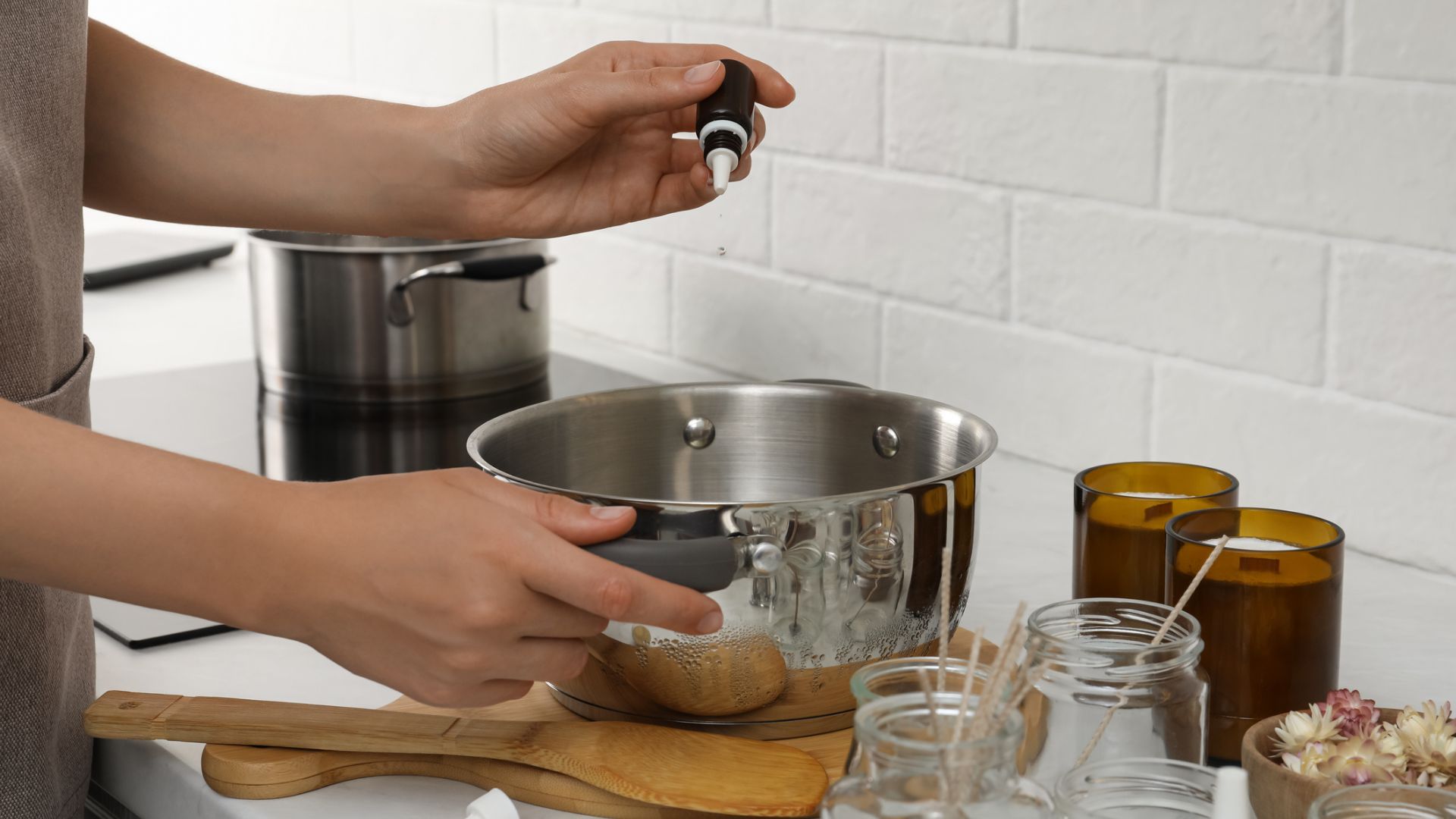
5. Add fragrance
Once the wax has reached 160 F, or the temperature recommended by the wax supplier, add fragrance oil if desired. Make sure the temperature is no higher than 200 F. Adding fragrance oil at too high of a temperature may cause it to dissipate, or burn off, in the melted wax.
6. Pour the wax
Pour the wax at a slow and steady pace into each container. Take your time with this step as rushing can cause air bubbles that you don't want. Leave about a 1/4 gap at the top.
7. Let the candles cool
Next, set the candles aside and allow them to completely cool. Leave them for at least 24 hours at room temperature if using paraffin wax. Beeswax and soy candles will need to cure for 1-2 weeks before use. Store them in an enclosed, cool place, like your pantry.
8. Trim the wick if required
Once the candle is fully cured, trim the wick. We'd advise going a little longer with the wick length to make the process easier. Aim to trim it to approximately 1/4–1/8 inches long.
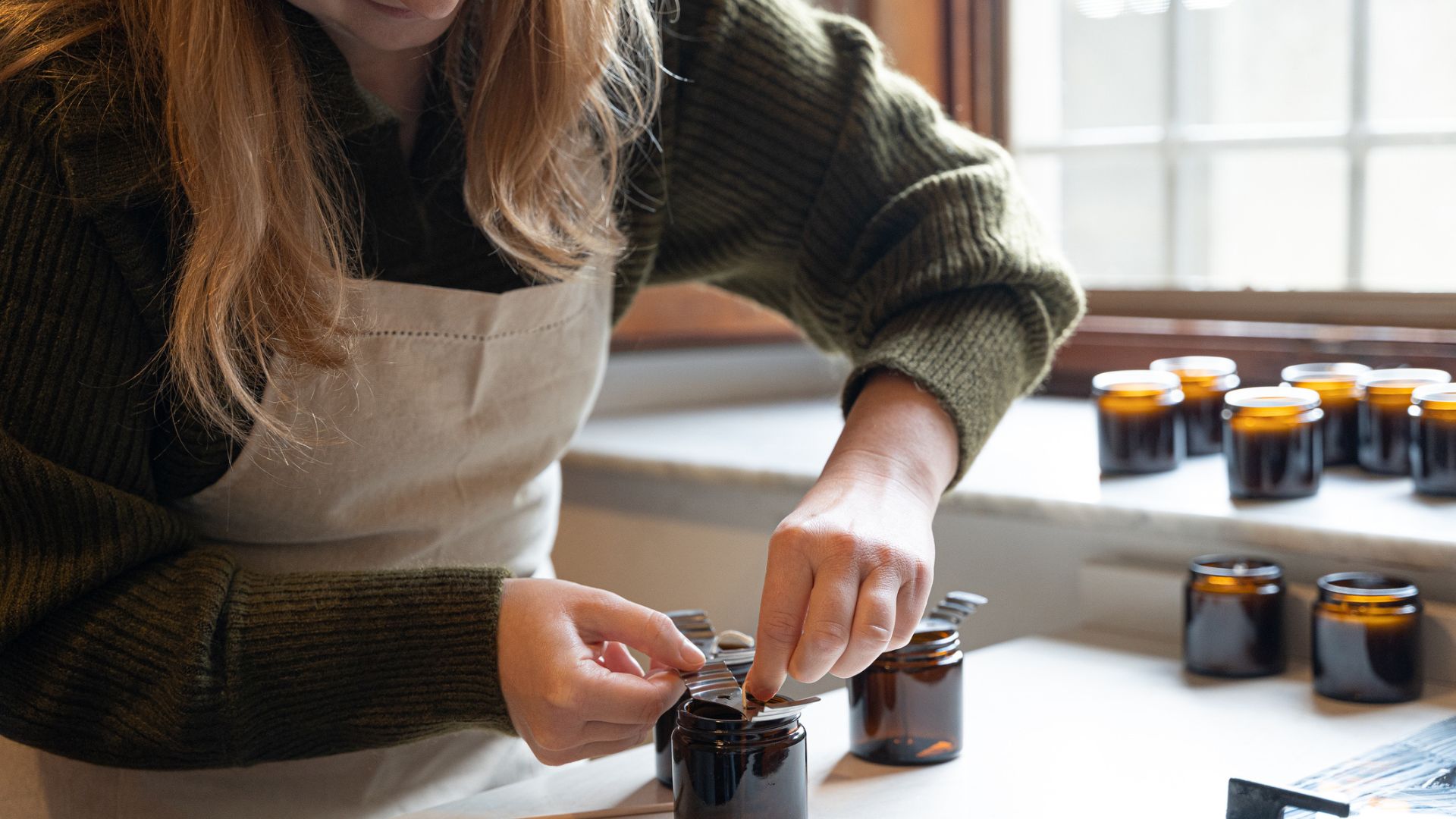
9. Label the candles
Once dry and cured, it's time to stick on the labels marked with the fragrance selections. If you're selling your candles or gifting them, this is where you can get really creative. Add a personalized message or pen an inspirational poetry quote on the label for a thoughtful gift idea.
Candle making tips from the experts
We asked candle-making experts about what the most important things to remember when candle-making, especially if you're just starting out.
- "Make candles at room temperature, as this definitely makes a better candle and will make the process easier—too hot or too cold and the candle may not set and curdle, or stick to the vessel. In particular, soy wax and oils set best when the temperature is just right," explains Avery.
- "Switch up your formula—at Moments Candles Co we work with about 50 different types of wicks and we very rarely use the same formula twice," says McCue.
- "I'd suggest doing your research is key before diving straight in—you'll still need to go through a lot of trial and error, but you can speed things up by being clued up on things like wax to oil ratio and types of wicks," McCue explains.
- "It's all about practice, practice, practice to get the perfect candle—more people than ever are thinking about making them as an additional form of income or starting it as a business, but there's a lot to consider. You also can't go on to sell anything to consumers that haven't been tested or aren't labeled correctly. You need to go through a lot of different safety procedures so please bear these in mind as you don't want to be responsible for any issues," McCue tells us.
Of course, if you want a helping hand, there are plenty of candle kits out there that will have the ingredients already measure out and tools to help you get to grips with candle making. We've rounded up out favorite kits below.
How hard is it to make candles?
"Making your own candles is relatively straightforward - if you can follow a recipe, you can make a candle. If you have the right ingredients, it should all go to plan," Avery tells us.
"There's quite a lot of factors when making a candle," McCue explains. "But that doesn't mean you need years of practice to get it right. I started making them whilst I was working in a high-profile corporate role and wanted to have a way to relieve stress and look after my own health and well-being. What started at my kitchen table in 2016, I found—surprisingly—that I had a real skill to be able to make them. Once you crack the physics of the jar, the type of wax, amount of oil, and the wick you use, you can start to have real fun with it."
What fragrance should I use for candles?
Fragrance choice all comes down to personal preference, so it can be a case of trial and error. A good test for essential oils is to dab two different oils onto a tissue and see which scent you're more drawn to, whether that's calming lavender or uplifting citrus.
"It's always been important to me that the candles we produce evoke real moments, to help with mental health and mindset," McCue told us. "When you're working with essential oils at home, it can be a little more tricky because obviously, they're highly concentrated so they take a bit more skill to mix them effectively—again practice makes perfect, and testing out new scents is part of the fun of candle making."
When it comes to selecting a fragrance Anita Doran, owner of Refill my Candles says, "The quality is key and makes all the difference to producing a luxury candle. I found some of the scented oils I tried gave me an instant headache and, therefore, took my time to choose which I used.
"I only have a small range of scents in my candle collection but they are all a product of divine-smelling, paraben-free, quality fragrance oils - like little luxury bottles of perfume giving you different notes throughout the life of the candle. My favorite scent is lemongrass. It's a simple and fresh aroma for the bathroom and kitchen, but also in the garden to help keep bugs away."
Indoors, citronella is an effective scent if you want to know how to keep flies out of the house. If you're looking for a less functional scent, take inspiration from the best perfumes - be it one of the best rose perfumes or punchy, citron-infused scents.
What safety measures should I take?
It's important to take the relevant safety measures when making candles. Always work in a careful and considered way when dealing with hot wax and ensure children and pets are out of the way.
Some other safety tips include:
- Protect skin by wearing long sleeves and trousers, make sure no skin is exposed. Also, invest in some protective gloves.
- Monitor the temperature of your wax before pouring it into the container, as if it's too hot it could break some materials such as glass. It's best to ensure it's below 160 F.
- Do your research before you begin and ensure you're using the right ratios, as too much oil can cause the candle to fall apart.
- Open doors and windows to ensure the space is well ventilated when breathing in fumes during the candle-making process.
- Be wary of essential oils coming into contact with skin, as they could cause irritation. "If any essential oils or fragrance oils come into contact with the skin, wash your hands straight away," Avery tells us. "Having said that, many oils made specifically for candles are vegan friendly and paraben-free, so are safer to use."
- Have a dedicated area where candles can cool, out of the way or children and pets, to protect both them—and the candles!
Is candle making more sustainable?
Upcycling old cosmetic pots, food containers or glass jars is a great way to limit consumption if you're trying to live sustainably, plus you're limiting the amount of packaging waste by making rather than buying candles. However, how sustainable your candles are is dependent on the wax used, as natural wax like beeswax and soy wax is kinder to the environment.
Meet our experts
Lucy Heale, London Refinery
Lucy Heale started The London Refinery three years ago, taking her business from the kitchen table to the global market. She specializes in creating pure essential oil candles and is passionate about experimentation.
London Kreautler, Particle Goods Candles
London describes scents as a 'particle phenomenon' and is passionate about harnessing oils from the natural world. Particle Goods Candles are a blend of renewable soy wax and oils ethically produced in Seattle, Washington.
Becky Avery, Hazel & Blue
Becky Avery has been making candles for ten years, finding her inspiration from fresh flowers, blooms, botanicals, woods, spices, and greenery. Raised in New Zealand, before settling in Wiltshire, England, her candles are synonymous with cozy, countryside living.
Helen McCue, Moments Candles
Helen's inspiration behind business Moments Candles is the powerful connection fragrance has with our emotions. Starting out in her kitchen back in 2016, she now ships her creations globally.
Jo Macfarlane, Jo Macfarlane Candles
Jo Macfarlane is an award-winning luxury scented candle maker, based in the beautiful East Neuk of Fife, Scotland. She draws inspiration from the wild natural landscapes around her and finds inspiration from wild plants and flowers.
Anita Doran, Refill my Candles
Anita set up Refill My Candles as an option for those who love luxury candles, but not the expense of investing in a new candle each time. An expert in candle pouring, she loves helping others breathe new life into old containers.
Rachel Homer has been in the interiors publishing industry for over 15 years. Starting as a Style Assistant on Inspirations Magazine, she has since worked for some of the UK’s leading interiors magazines and websites. After starting a family, she moved from being a content editor at Ideal Home to be a digital freelancer and hasn’t looked back.
- Anna PaulFreelance editor and writer
